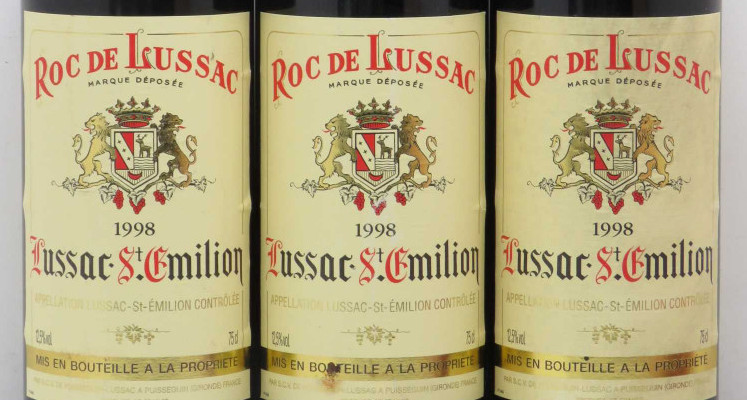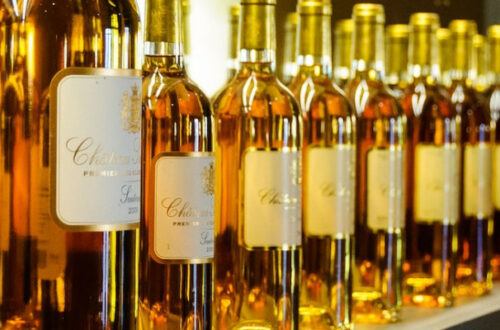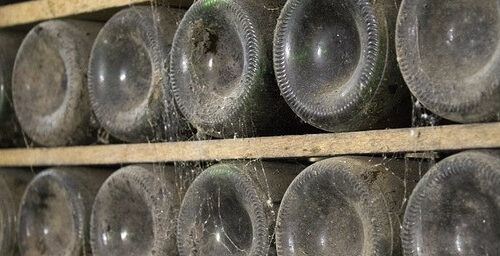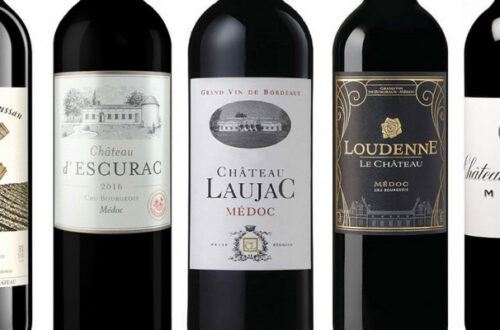
What type of wine is Saint-Emilion wine?
Saint-Emilion was the first wine-producing region to be listed as Unesco World Heritage. It’s actually a very nice village and on TripAdvisor or Getyourguide, you’ll get a large choice in visiting this village and tasting the wines.
But first, what type of wine is Saint-Emilion wine?
The impact of soil on the type of Saint-Emilion wine
Saint-Emilion lies in the Bordeaux wine region on the Right Bank of the Garonne. As you may have read in related posts, Merlot is thus the dominating grape variety in the blends.
Why is that? Because the terroir effect is very important in Bordeaux. The terroir is the soil and the climate. And the specificity of Bordeaux is enhancing this terroir in the wines. And this is achieved by pairing the soil with the right grape variety.
Saint Emilion has three types of soil :
- the limestone plateau made from limestone and clay : limestone soils are draining. The water penetrates the soil and thus optimizes the water management of the vine. In addition, limestone is a mixture of minerals: calcium and magnesium. The wines are then fine, precise and of great minerality. The clay-limestone soils look like loam, dotted with more or less hard white stones. Clay brings freshness and limestone its draining properties. These soils are perfect for Merlot.
- slopes of sand and clay : the sand will warm the vines’ roots making the grapes ripen faster. The wine will be then be softer and tastier.
- mostly clay at the bottom of the slopes : clay soils have a high water retention capacity (which is useful in times of drought). However, these are heavy and cold soils. Thus, early ripening grape varieties are more suitable. These soils give fleshy and powerful wines.
You see how soil will impact the wine? Wine from sandy soils will be lighter with more fruity flavours, whereas the wines from clay and/or limestone soils will be richer, fuller-bodied and can age longer.
Moreover, limestone soils, by enabling the roots to plunge further down, not only can the vine go longer without water but it can (and will) ingest the specific minerals found in a limestone terroir. Thus, the wines, whose grapes are grown on the plateau, will often display strong minerality.
This diversity of soils explains the large palette of styles Saint-Emilion wines has to offer. These wines are indeed a combination of the terroir and the choice of the winemaker.
Concerning the climate, the maritime influence is lessened in the lands. Thus, the difference in temperature between winter and summer are greater. This makes it more difficult for Cabernet Sauvignon to ripen for example. But let’s not get ahead of ourselves.
The pairing of soil and the grape variety
Like any Bordeaux, Saint-Emilion wines are blends of several grape varieties, mostly Merlot and Cabernet Franc. Some winemakers might also add Cabernet Sauvignon and Petit Verdot.
However, Cabernet Franc is mostly used to bring the tannins and body to the wine instead of Cabernet Sauvignon, because due to the lower temperatures, the latter will ripen with more difficulty
The notable exception is the Château Figeac where Cabernet Sauvignon represents one third of the planted grape varieties.
Otherwise, Cabernet Franc is used to one third of the blends. Well, except for the famous winerie Cheval Blanc. There Cabernet Franc is over 50% of the blend.
Concerning the aromas, the Merlot will bring the fruity characters and the Cabernet Franc the spices and flowery aromas. Thus, Saint-Emililon wines will present aromas of plum, black cherry, blueberry, liquorice, chocolate, smoke, spice… When aging, these aromas will become truffle, flowers, spice…
Be careful, there are several Saint-Emilion !
Saint-Emilion has several sub regions, well they used to be neighbors, but Saint-Emilion swallowed them. However, they each have their characteristics, so they kept their original names and added “Saint-Emilion” at the end.
These four sub regions are called the satellites of Saint- Emilion.
Lussac-Saint-Émilion is the sub region of Saint-Émilion that mostly produces Merlot-based wine. Its independent appellation name was created in 1963. Soils are made of clay and limestone mostly. Like many Bordeaux wines, these wines are full-body with red fruits aromas.
Montagne-Saint-Émilion has also Merlot dominated-blends. The two main estates here are Beausejour and Faizeau. The independent appellation was created in 1936. The soils are very varied, from limestone or clay limestone to sand clay and sand-gravel. These produces wine that are pleasantly fresh with red fruit aromas and with powerful tannins.
Puisseguin-Saint-Émilion is smaller than the regions above. However, wines are high quality, mostly due to the fact that this region has the strictest rules. The soils are made from clay and limestone, which means grapes will ripen faster and thus, the wines will be soft and tasty.
Saint-Georges-Saint-Émilion is the smallest of tall. The appellation was created in 1936. Its soils of clay and limestone and high level of sunshine enable the grapes to reach full maturity. The wines produced are powerful and age-worthy.
Classification in Saint-Emilion
The classification of Saint-Emilion took place ten years later by INAO (Institut National de l’Origine et de la Qualité) and the ministries of Agriculture and Consumer and Commercial Relations on request of the Saint-Emilion appellation defense union.
This classification was done upon the following criteria :
- tasting of the wines,
- terroir
- renown of the Châteaux
82 châteaux were classified in Premier Grands Crus Classés, itself divided into A and B, and Grand Cru Classé.
Be careful, there is also a Saint-Emilion Grand Cru appellation : this regroups producers within a clearly defined appellation zone which meet specific requirements.
However, since its creation in 1954, it has been subject to debate. These requirements are viewed too loose and on several years, there are more Saint-Emilion Grand Cru than plain and simple Saint-Emilion…
The garage movement
This is a well-known yet rather short movement.
In this appellation on the Right Bank appeared full-bodied and incredibly ripe wines, produced in very small quantities from small plots, without looking at the expense. They have been called “garage wines” or “garage wines” but some have managed to make their way into the Saint-Emilion classification, such as Château Valandraud.
Conclusion : What type of wine is Saint-Emilion wine?
White wines don’t belong to the appellation and will fall under the Bordeaux appellation. So obviously, wines from Saint-Emilion are red. They are full-bodied wines, with moderate tannins, high acidity and complex aromas. Indeed, Saint-Emililon wines will present aromas of plum, black cherry, blueberry, liquorice, chocolate, smoke, spice… When aging, these aromas will become truffle, flowers, spice…
Did you ever get a taste of a Saint-Emilion wine? Let me know in the comments!







4 Comments
John Sutherland
Extremely detailed description of this area’s wines and a precise explanation of the reason for their quality.
Mademoiselle
Thank you John for stopping by ! I’m glad you enjoyed it
Taxmizer
Extremely well written article of the wines of this area including the technical reasons for their quality. as most readers will be unable to visit these areas personally it would be helpful to know how readers can buy these wines in various areas of the world.Perhaps they are only available in france. Vive La France!
Mademoiselle
Stay tuned because I am preparing this kind of post 😉
if you live in the US, I’ve already written a review on one wine club. Feel free to check it out here : https://winebymademoiselle.com/review-sommailier-wine-club-is-it-worth-it/